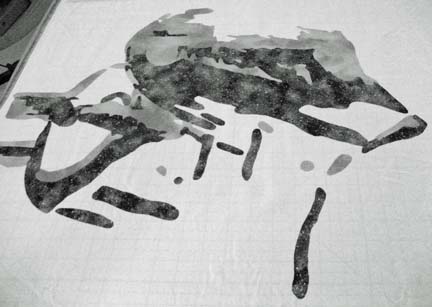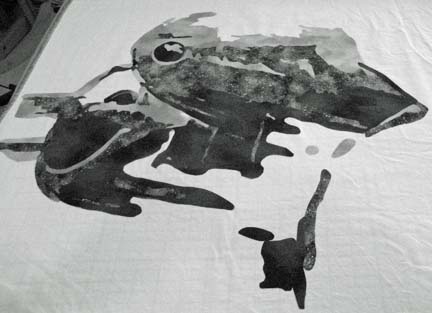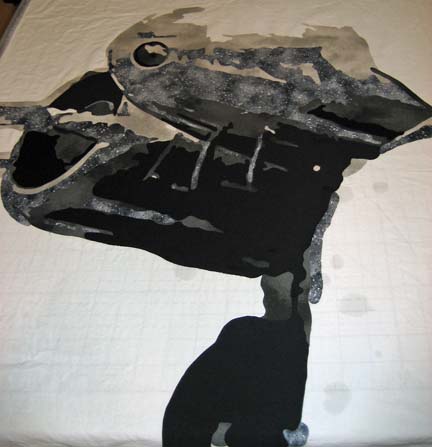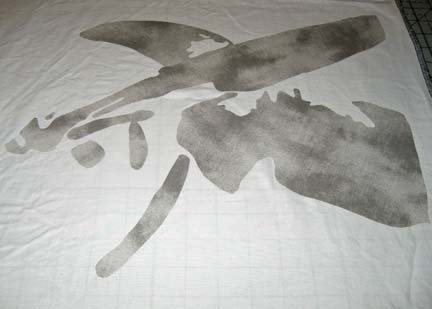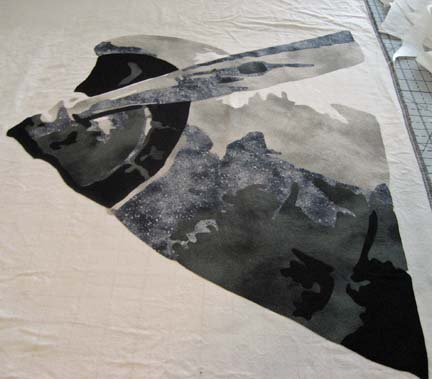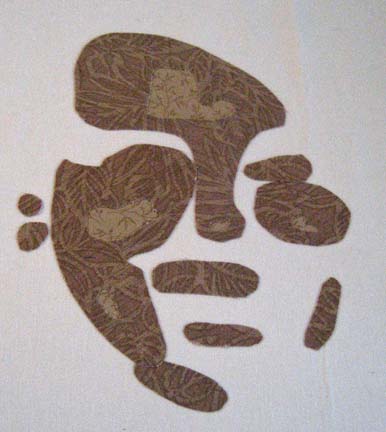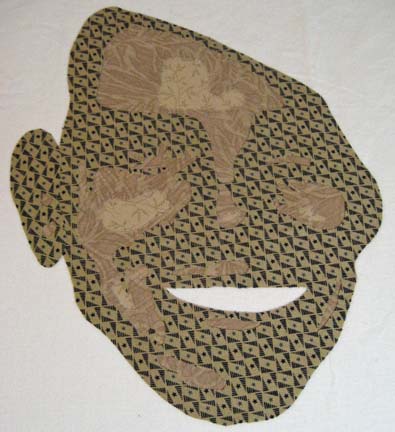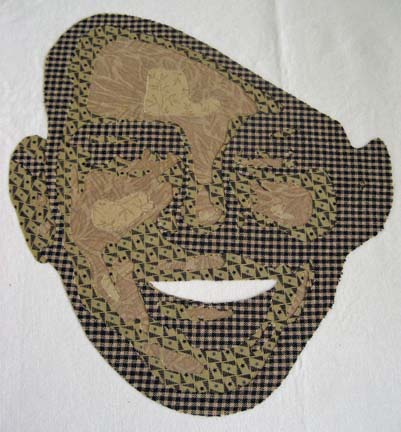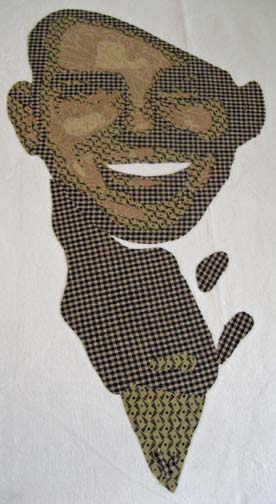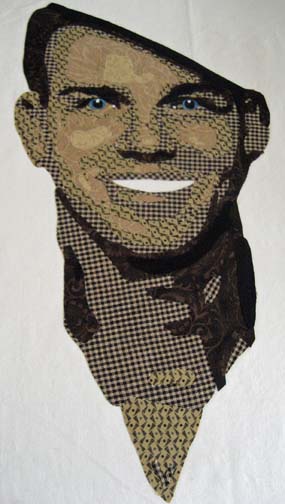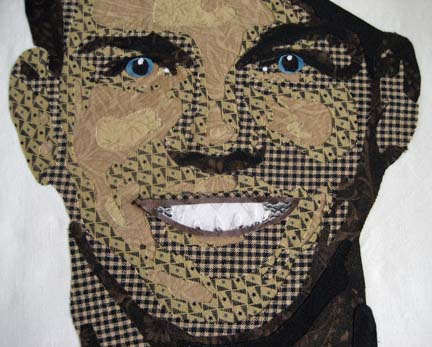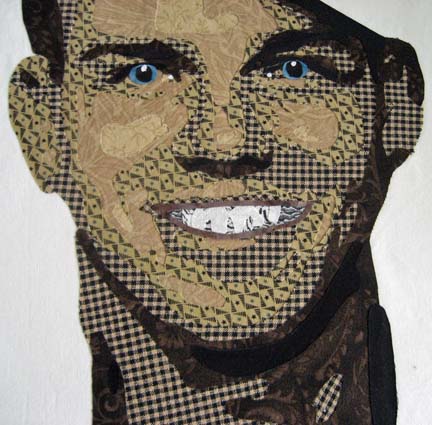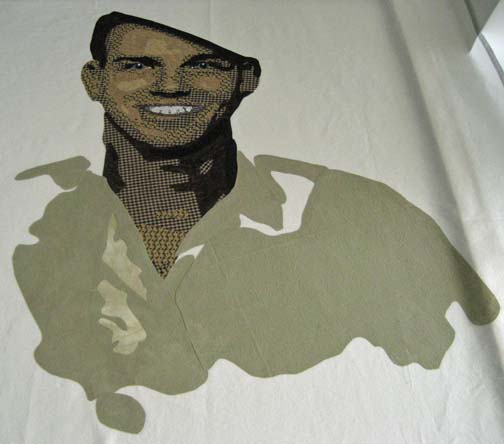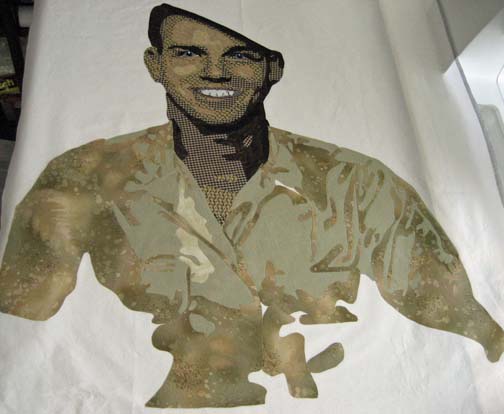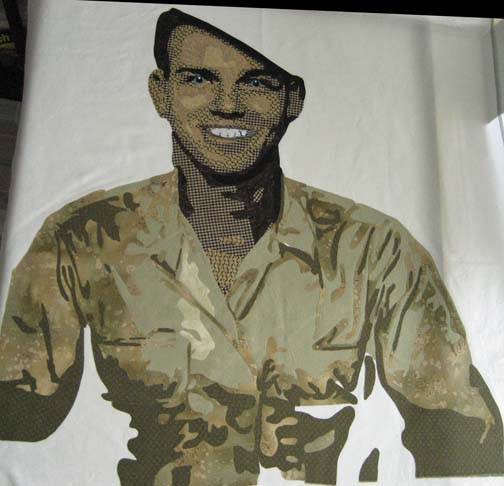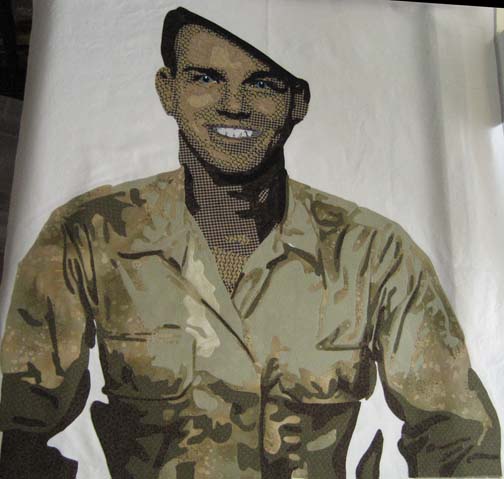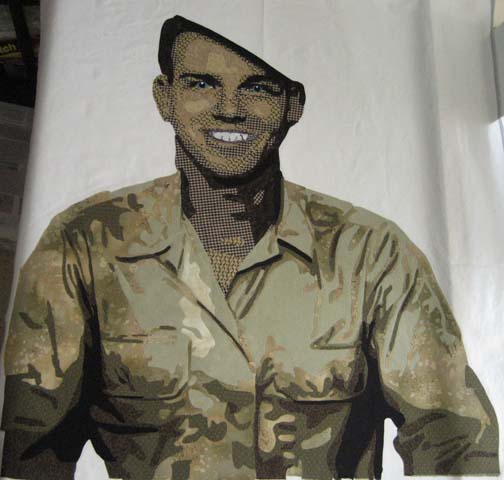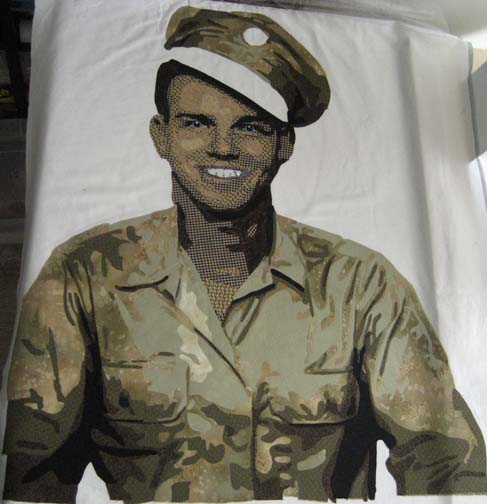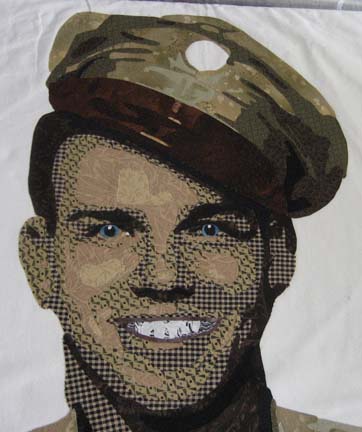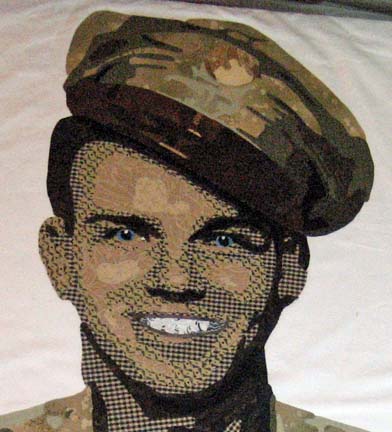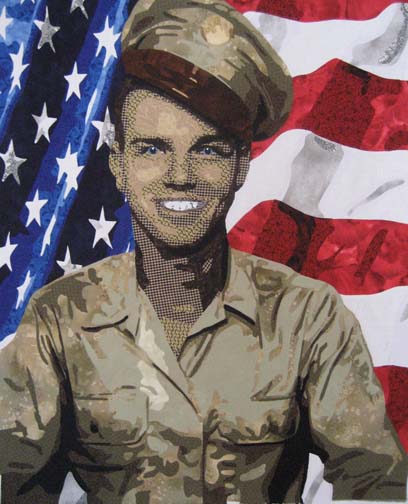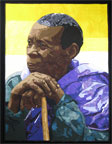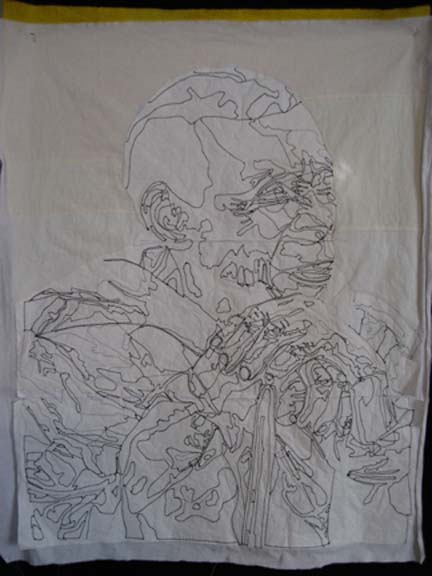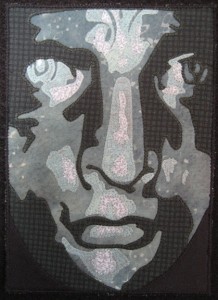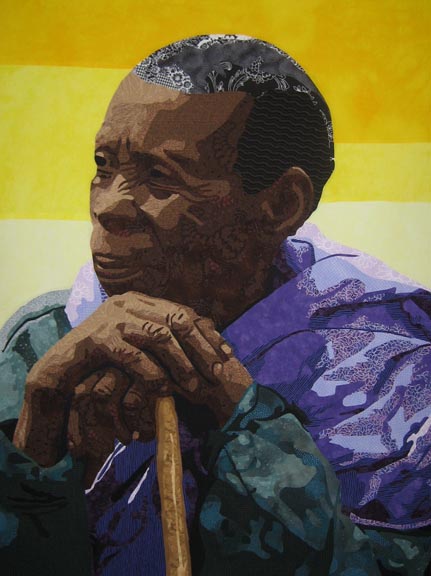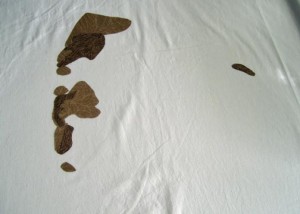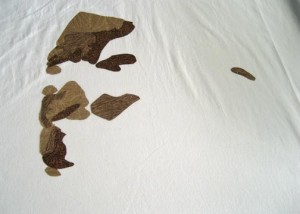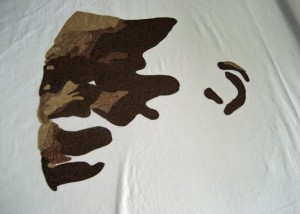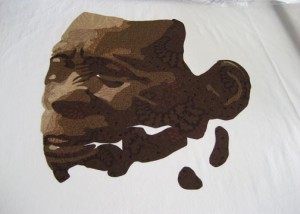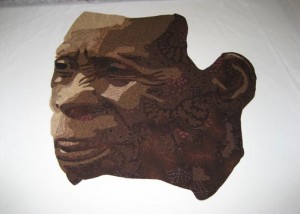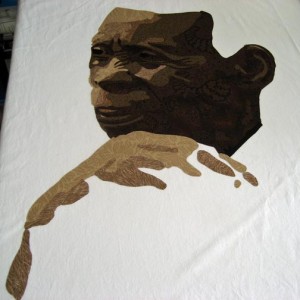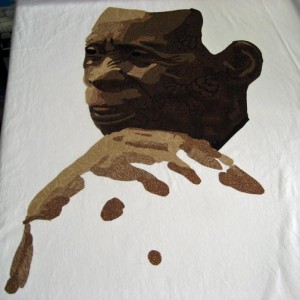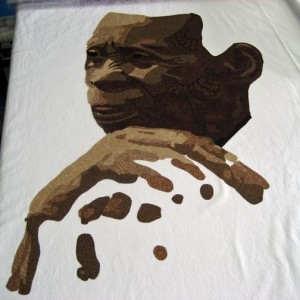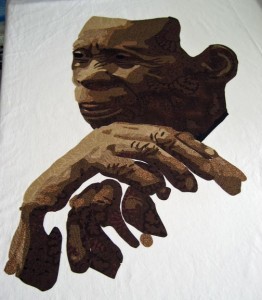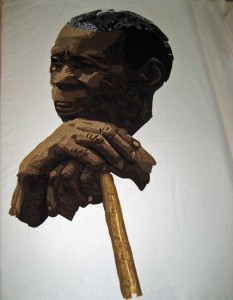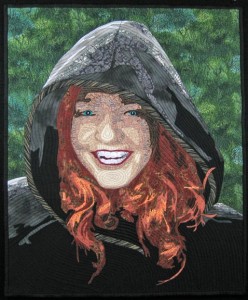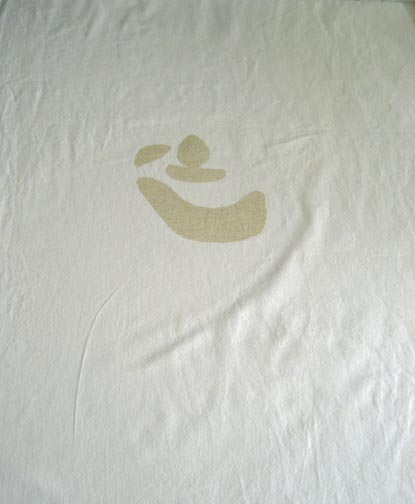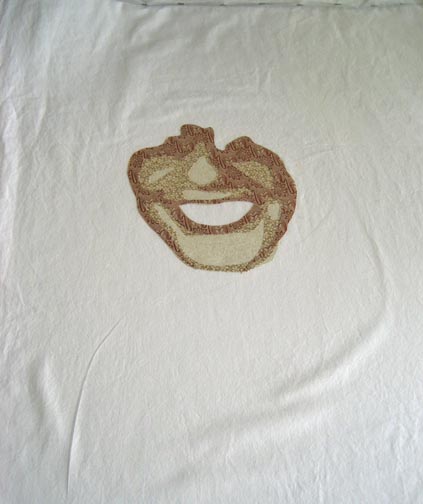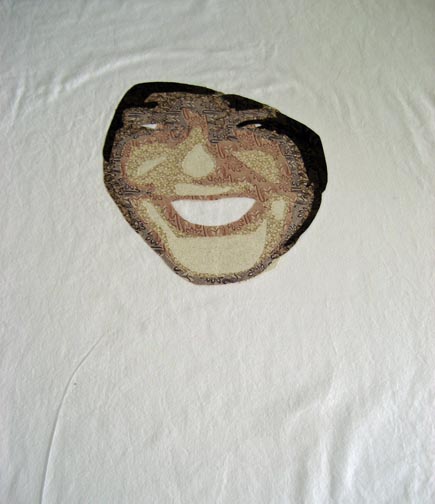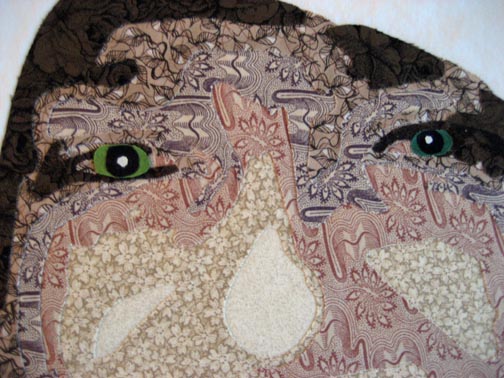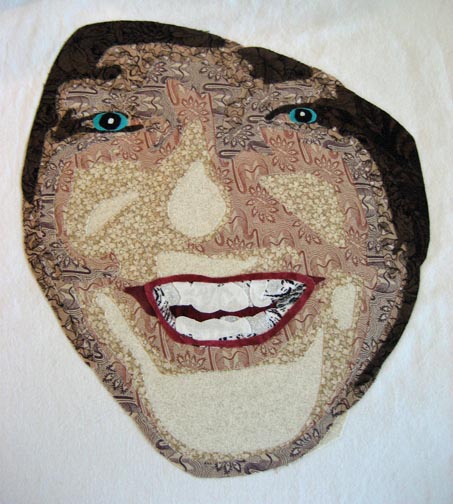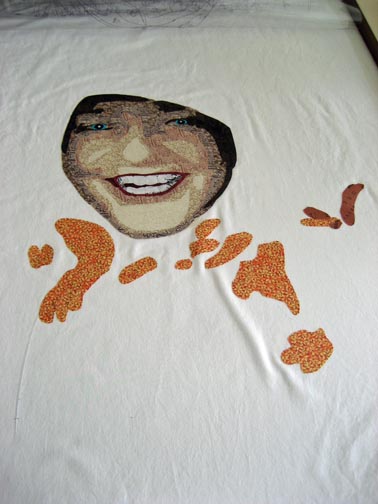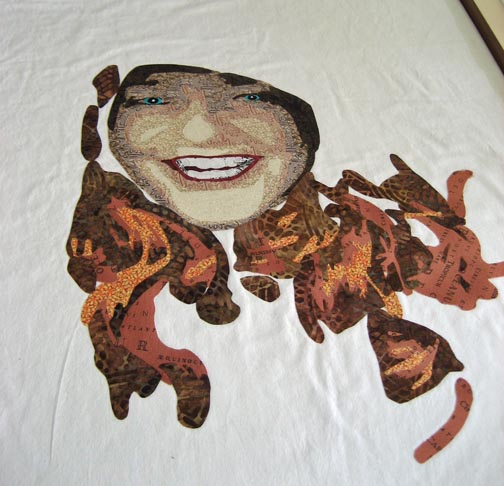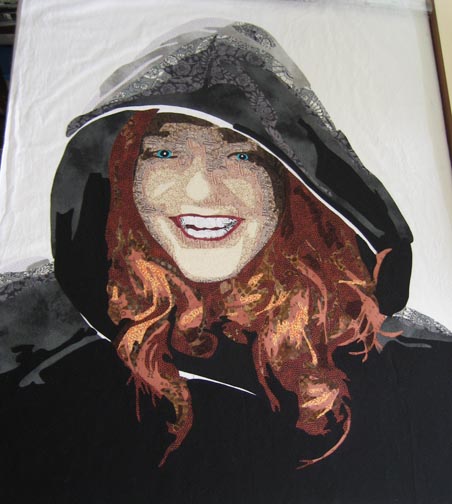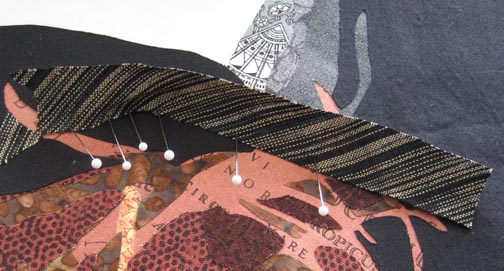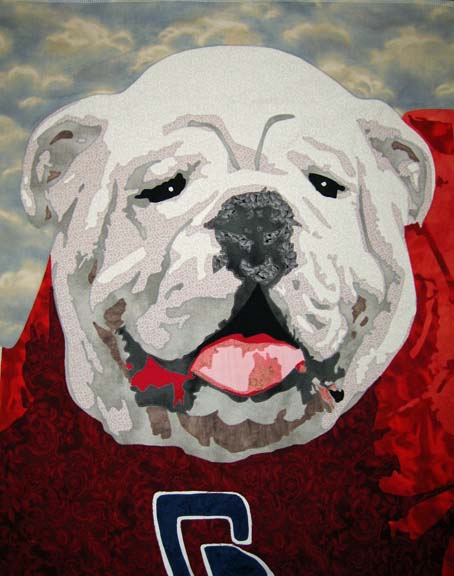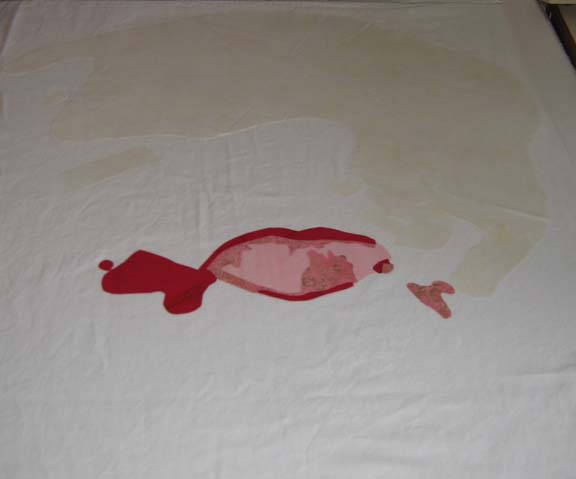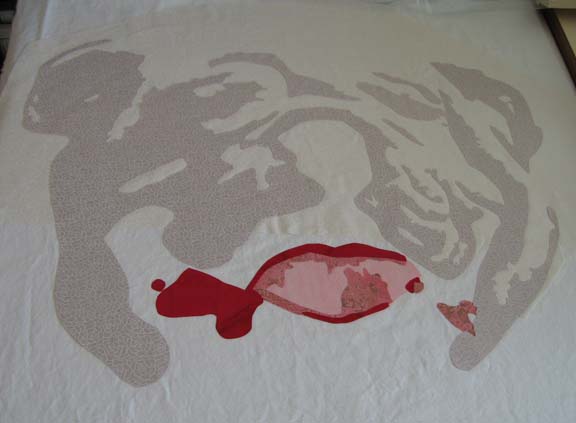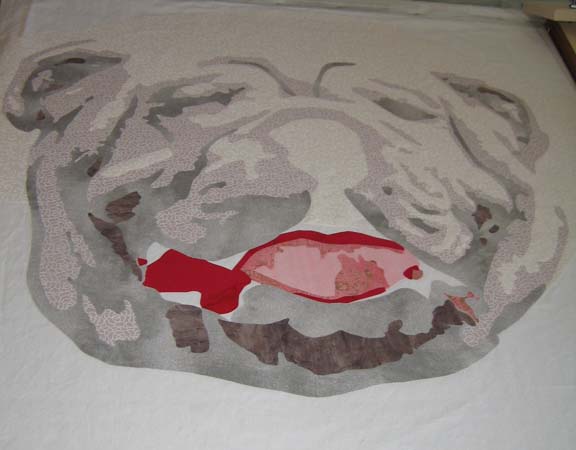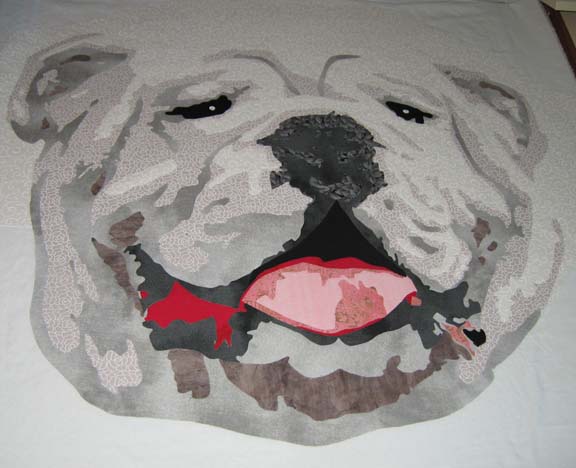I’ve had many people ask me how I make my quilts, and the answer is — one piece at a time. You break everything down into workable areas — or really into color families.
The piece that I’m currently working on is Amelia Earhart. When I was designing the piece, I didn’t like the picture of the plane in the background — so I took a different picture of her plane and put it in the background — moving it so that it accentuated her silhouette.
I decided to start with the plane. The plane itself is gray — but gray is a spectrum from white to black. I chose fabrics in a range of values in that color range. I used the actual foundation fabric as the white and started building from there. With the first layer of gray, it’s difficult to see the left wing and engine.
The next value give more definition to the object.
And as I add the layers of values, the image begins to emerge.
The final layer shows all of the details. (Keep in mind that this lays flat on a table. If I don’t stand on my tip toes when I take the picture, the camera adds a shade to the picture. I don’t always remember to make myself tall when I take the picture. Because It’s on a table, there is also some distortion in the shapes that you’ll see when I finally hang the piece vertically.)
Amelia stands in the middle — with the engine & wings on either side of her. This is the beginning of the right side.
And this is what it looks like completed.
It still looks unfinished — but most of that blank space is where Amelia will go.
I’m actually done except for her bomber jacket and the sky in the background but I decided that I would show you this in pieces — by color family — to show you how I work it out in my head. The next part will be about her face — and then her hair — and then her scarf — and hopefully by then, her jacket.


